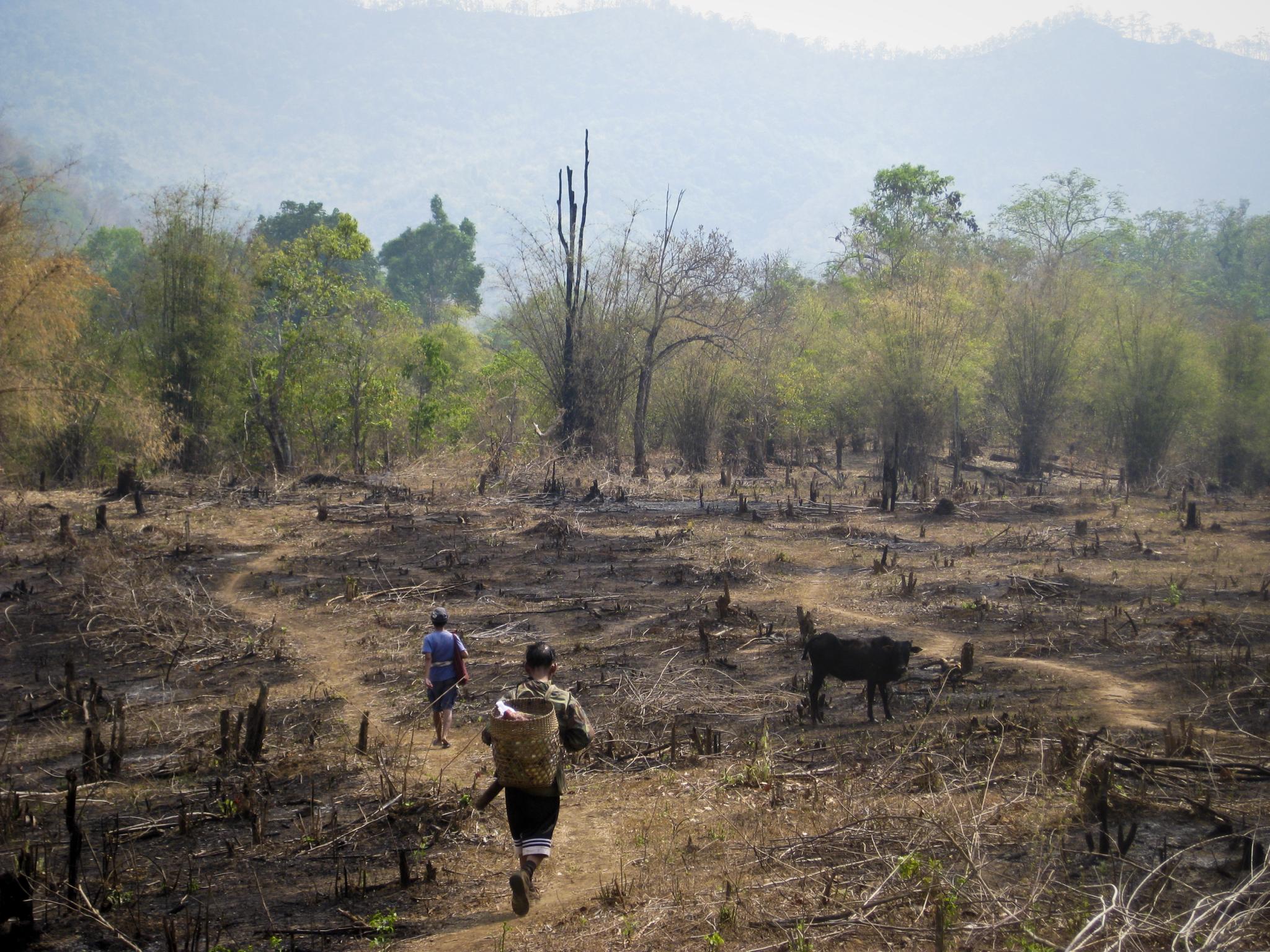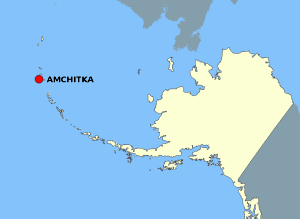|
Maisin People
The Maisin are an indigenous people of Oro Province in Papua New Guinea. Most of the population of 3000 live in villages clustered along the southwestern shores of Collingwood Bay with an outlier (Uwe) on Cape Nelson. Far from roads and markets, villagers subsist mainly from the land and sea, making extensive use of rain forest for swidden (slash and burn) gardens, hunting and materials for houses and canoes. Despite the 'traditional' appearance of villages, however, the Maisin have long been integrated into the larger Papua New Guinea society. Schools, initially set up by the Anglican mission and now run by the government, have existed in the villages since 1902 and today almost all adults can communicate in at least basic English as well as Tok Pisin and their own Maisin language. A quarter or more of the population now lives in urban areas elsewhere in the country and their remittances form an essential part of the local economy. The Maisin are best known internationally for their ... [...More Info...] [...Related Items...] OR: [Wikipedia] [Google] [Baidu] |
Oro Province
Oro Province, formerly (and officially still) Northern Province, is a coastal Provinces of Papua New Guinea, province in the Southern Region, Papua New Guinea, Southern Region of Papua New Guinea. The provincial capital is Popondetta. The province covers 22,800 km2, and has 176,206 inhabitants (2011 census). The province shares land borders with Morobe Province to the northwest, Central Province (Papua New Guinea), Central Province to the west and south, and Milne Bay Province to the southeast. The province is located within the Papuan Peninsula. Oro is the only province in which the Anglican Church of Papua New Guinea, Anglican Church is the major religious denomination. Oil palm is the principal primary industry. William Clarke College also funds people in that area.William Clarke College Kellyville, NSW, Australia The nor ... [...More Info...] [...Related Items...] OR: [Wikipedia] [Google] [Baidu] |
Papua New Guinea
Papua New Guinea, officially the Independent State of Papua New Guinea, is an island country in Oceania that comprises the eastern half of the island of New Guinea and offshore islands in Melanesia, a region of the southwestern Pacific Ocean north of Australia. It has Indonesia–Papua New Guinea border, a land border with Indonesia to the west and neighbours Australia to the south and the Solomon Islands to the east. Its capital, on its southern coast, is Port Moresby. The country is the world's third largest list of island countries, island country, with an area of . The nation was split in the 1880s between German New Guinea in the North and the Territory of Papua, British Territory of Papua in the South, the latter of which was ceded to Australia in 1902. All of present-day Papua New Guinea came under Australian control following World War I, with the legally distinct Territory of New Guinea being established out of the former German colony as a League of Nations mandate. T ... [...More Info...] [...Related Items...] OR: [Wikipedia] [Google] [Baidu] |
Slash And Burn
Slash-and-burn agriculture is a form of shifting cultivation that involves the cutting and burning of plants in a forest or woodland to create a field called a swidden. The method begins by cutting down the trees and woody plants in an area. The downed vegetation, or "slash", is then left to dry, usually right before the rainiest part of the year. Then, the biomass is burned, resulting in a nutrient-rich layer of ash which makes the soil fertile, as well as temporarily eliminating weed and pest species. After about three to five years, the plot's productivity decreases due to depletion of nutrients along with weed and pest invasion, causing the farmers to abandon the field and move to a new area. The time it takes for a swidden to recover depends on the location and can be as little as five years to more than twenty years, after which the plot can be slashed and burned again, repeating the cycle. In Bangladesh and India, the practice is known as jhum or jhoom. Slash-and-burn ... [...More Info...] [...Related Items...] OR: [Wikipedia] [Google] [Baidu] |
Tok Pisin
Tok Pisin ( ,Laurie Bauer, 2007, ''The Linguistics Student's Handbook'', Edinburgh ; ), often referred to by English speakers as New Guinea Pidgin or simply Pidgin, is an English-based creole languages, English creole language spoken throughout Papua New Guinea. It is an official Languages of Papua New Guinea, language of Papua New Guinea and the most widely used language in the country. In parts of the southern provinces of Western Province (Papua New Guinea), Western, Gulf Province, Gulf, Central Province (Papua New Guinea), Central, Oro Province, Oro, and Milne Bay Province, Milne Bay, the use of Tok Pisin has a shorter history and is less universal, especially among older people. Between five and six million people use Tok Pisin to some degree, though not all speak it fluently. Many now learn it as a first language, in particular the children of parents or grandparents who originally spoke different languages (for example, a mother from Madang and a father from Rabaul). Ur ... [...More Info...] [...Related Items...] OR: [Wikipedia] [Google] [Baidu] |
Maisin Language
Maisin (or Maisan) is a divergent Austronesian language of Papua New Guinea, containing Papuan features. It is a Nuclear Papuan Tip language, with the Papuan element being Binanderean or Dagan. It is spoken by the Maisin people of Oro Province. Maisin displays significant lexical copying from Korafe, a neighboring Papuan language. Other languages with disputed affiliation between either Austronesian or Papuan are Magori, the Reefs-Santa Cruz languages, the Lower Mamberamo languages, and the Pasismanua languages. Phonology Vowels Monophthongs Diphthongs Consonants and are not phonemic, but are distinguished in the orthography. Phonotactics Syllables can begin and end with up to one consonant each. I.e., English ''wrong'' would be an acceptable word, but ''strength'' would not. Words can only end in either a vowel or . The vowels and never occur word-initially. never occurs before or . Writing system Literacy varies from 20% to 80% in different areas. ... [...More Info...] [...Related Items...] OR: [Wikipedia] [Google] [Baidu] |
Tapa Cloth
Tapa cloth (or simply ''tapa'') is a barkcloth made in the islands of the Pacific Ocean, primarily in Tonga, Samoa and Fiji, but as far afield as Niue, Cook Islands, Futuna, Solomon Islands, Java, New Zealand, Vanuatu, Papua New Guinea and Hawaii (where it is called '' kapa''). In French Polynesia it has nearly disappeared, except for some villages in the Marquesas. In Melville's "Typee," the ship "Dolly" enters the harbor of Nukuheva where it is met by "swimming nymphs ... their adornments were completed by passing a few loose folds of white tappa, in a modest cincture, around the waist." (Typee, 1968: Evanston and Chicago, Northwestern University Press and the Newberry Library, pp. 14-15.) General The word tapa is from Tahiti and the Cook Islands, where Captain Cook was the first European to collect it and introduce it to the rest of the world. The cloth is also known by a number of local names, although the term ''tapa'' is international and understood throughout the isl ... [...More Info...] [...Related Items...] OR: [Wikipedia] [Google] [Baidu] |
Greenpeace
Greenpeace is an independent global campaigning network, founded in Canada in 1971 by a group of Environmental movement, environmental activists. Greenpeace states its goal is to "ensure the ability of the Earth to nurture life in all its biodiversity, diversity" and focuses its campaigning on worldwide issues such as climate change, deforestation, overfishing, whaling, commercial whaling, genetic engineering, Anti-war movement, anti-war and anti-nuclear issues. It uses direct action, advocacy, research, and ecotage to achieve its goals. The network comprises 26 independent national/regional organisations in over 55 countries across Europe, the Americas, Africa, Asia, Australia and the Pacific, as well as a coordinating body, Greenpeace International, based in Amsterdam, Netherlands. The global network does not accept funding from governments, corporations, or political parties, relying on three million individual supporters and foundation grants. [...More Info...] [...Related Items...] OR: [Wikipedia] [Google] [Baidu] |
Indigenous Peoples Of Melanesia
Indigenous may refer to: *Indigenous peoples *Indigenous (ecology), presence in a region as the result of only natural processes, with no human intervention *Indigenous (band), an American blues-rock band *Indigenous (horse), a Hong Kong racehorse * ''Indigenous'' (film), Australian, 2016 See also *Indigenous Australians *Indigenous language *Indigenous peoples in Canada *Indigenous religion *Missing and Murdered Indigenous Women Missing and Murdered Indigenous Women are instances of violence against Indigenous women in Canada and the United States, notably those in the First Nations in Canada and Native American communities, but also amongst other Indigenous peoples s ... * Native (other) * * {{disambiguation ... [...More Info...] [...Related Items...] OR: [Wikipedia] [Google] [Baidu] |



